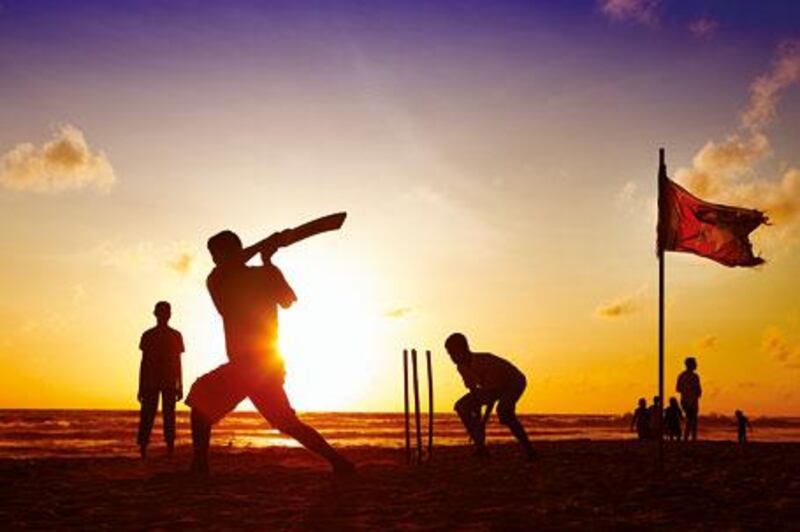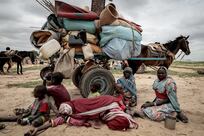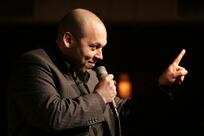When Pakistani journalist Abid Shah visited Sri Lanka, everyone wanted to talk to him about the attack on their national cricket team in Lahore, and Shah began to see South Asia's differences through the prism of the sport. Something was wrong. The heat was there, the sun strong; the streets were hustle-bustle, the bazaars too; and clogging the roads were freewheeling three-wheeler taxis which in Pakistan I called rickshaws, but here are called tuc-tucs. Everything told me this was still South Asia, that Colombo was not very different from Lahore, that somehow our regional bond held. Yet, something was very different, and I was struggling to pinpoint it.
On the train, its carriages rattling as it hugged Sri Lanka's western coast and chugged south, I fell into conversation with the man next to me. Arriva deSilva was a retired medical technician with spectacles, a short-sleeved shirt and wispy hair. He was a man of firm opinions, and he started grilling me about Pakistan with growing indignation. Why, he asked, were so many Pakistanis illiterate, when Sri Lankans were so educated, when Sri Lanka boasted a literacy rate above 90 per cent? How could a democracy work with so many illiterate people?
It was not, I assured him, because Sri Lankans ate so much fish, but because of Pakistan's feudal history, because of its unstable dictatorships and its ingrained class system. This was unacceptable to deSilva; no wonder Pakistan was such a mess. Here, a pedlar stepped in, and did just what so many Pakistanis do when they meet foreigners: determine their religion. He claimed a kinship of faith. "Brother, you are Muslim," he said as his knee dug into me, his arm grabbed the railing above my seat, and his armpit nuzzled my nose. "So I must warn you about people who will lie to you, who will offer you rooms, drugs and women. These people are bad and they will steal from you."
Then he smiled, his grey hair plastered on his forehead. "Do you need a place to stay?" At this moment, under the pressure of trying to escape the man, I realised what was bothering me. So I got rid of the huckster quickly, rudely. Why, I asked deSilva, did I see no games of street cricket? It was the weekend, and at the weekend in Pakistan, every other street, any bare space, would be teeming with children swinging bats, swatting tennis balls bound in electrical tape, playing a game of impromptu cricket.
I have many fond memories of such pick-up games. Cars zooming up and swerving around the bowler, the batsmen and the makeshift wickets made from bricks. These evenings were glorious, and the ball would inevitably end up in the yard of the old lady next door, or be stuck deep in the overgrown hedge, to be hacked with our bats to recover it. Cricket was a way of life, the Pakistani cricketers were our heroes, and in every spare moment we lived out our dreams of replicating their deeds until our mothers would start yelling out to us to stop playing and come inside to do our schoolwork, thus exposing our dreams as hollow lies.
So my question: where was the spontaneity, the joy, the unstructured chaos of street cricket in Sri Lanka? DeSilva could not understand what I was saying. Children played cricket in schools, he said. Or in grounds. Why would they play in the street? Which reminded him. What had happened in Lahore? My trip to Sri Lanka was in March, so we both knew what he meant. "So tell me," his furrowed stare burrowed through me. "Who did it? The Tamils?"
"The Taliban." To each his own demons. DeSilva, like many Sri Lankans I met, was asking about the commando-style attack on the Sri Lankan cricket team in Lahore. These questions were asked in the half-joking camaraderie of a people who are accustomed to terrorist threats - and so I easily found common ground with them. In March, the Sri Lankan government's victory over the Tamil Tigers was two months away, and the country had suffered a quarter of a century of communal violence that left more than 70,000 people dead.
The Lahore attack had happened three weeks before my trip, on March 3, and my experience of it was somewhat personal. I exercise at a health club which is a short distance from the cricket stadium, and at 9.30 that morning, I was driving to my gym. At that time, Lahore is quiet after the noisy mess of the morning rush hour, and I can take advantage of the window of calm before the streets clog up again at lunchtime. On that morning, I zipped through the streets until I reached Main Boulevard, the city's tree-lined thoroughfare, when a policeman stopped me. Behind him was a flimsy steel and barbed wire barricade.
"There has been an attack and we think they hit a few cricketers," the young, clean-shaven warden's face was confused and his voice was shaking. "We don't know what is happening right now." The attack had happened 50 minutes earlier, when the Sri Lankan cricket team was travelling by bus to the cricket stadium, protected by a light police escort. At Liberty Circle, a major intersection in Lahore, several young men carrying backpacks, guns and grenades attacked the escort and tried to stop the bus. The bus driver, spurred on by the cricketers, sped up as bullets rattled the bus and some hit players, but the bus passed over a grenade and made it to the safety of the stadium 500 metres away, which was guarded by a heavy police contingent.
Feel for the escort. Six policemen were killed. Lightly armed, exposed, ambushed, they died next to each other, giving their lives for Dh735 a month. At least one police station was within range of Liberty Circle; the gun battle lasted several minutes, yet no police responded. The assailants escaped on motorbikes. Even the police contingent at the stadium hunkered down. "Our priority was to protect the team," a sergeant told me. "So we stayed put."
So his colleagues died. Flashing my press pass, I reached the cricket stadium just as the Sri Lankan team was being airlifted by army helicopter to the airport (they flew to Sri Lanka that day). The team bus was standing at the stadium, as was the bullet-ridden, bloodstained umpire's van, its front seat covered with shattered glass. Incredibly, the van and its passengers had been abandoned in the middle of Liberty Circle, forgotten by the gunmen; the umpires and officials escaped by crouching on the floor, listening to the sounds of gunshot, nursing their wounds as their driver died.
The attack brought cricket to the forefront of any discussion I had in Sri Lanka; from analysing conspiracy theories about the attackers, to comparing the merits of different players, I started seeing Sri Lanka through the prism of cricket. The Sinhala Sports Club is Colombo's main cricket ground. It is pretty and lush green. With only 10,000 seats, it's smaller than I expected. The scoreboard dominates the view, and club members have a good, intimate view of the pitch.
Nabeel, a member of the club, took me along. He is a young man who works at an office during the day and unwinds at the club's bar. We ordered drinks, chicken and a cheese concoction. Outside the bar's windows, the shadows were lengthening and a three-day, school cricket game was in its final stretch. Alumni guzzled drinks in the stands, children cheered and parents clapped. Spectators with no connection to either school watched. At the finish, an announcer distributed prizes.
School matches are regularly played in the national stadium, several schools end their season with a match there, giving schoolboys the opportunity to dream. I don't know of a similar practice in Pakistan. At the wood-panelled offices of the Sri Lankan Cricket Board, I met Nasantha Ranatunga, the secretary. A press officer told me that I was the first Pakistani journalist to visit the Board in Colombo since the Lahore attacks. Colombo had been crawling with Indian journalists looking for that all-important newsbite. None of the 21 or so Pakistani news channels made the trek.
I told him I wanted to talk cricket, not politics. And so Ranatunga talked to me about the latest Sri Lankan grassroots initiative. The Sri Lankan Cricket Board is distributing free cricket kits around rural Sri Lanka - bats, balls, pads and wickets. Board members travelled across the country, identified weaknesses in rural facilities, and planned to introduce more children to playing cricket with kits, including professional hard leather balls, unlike the soft tennis balls I used to play street cricket with.
In fact, Colombo has a soft ball cricket association too, which organises tennis ball matches. I never managed to visit the soft ball cricket association, but I desperately wanted to play soft ball cricket. Somewhere, on this island. Arriva deSilva had scoffed at Pakistan's low literacy levels and told me that Sri Lanka had good infrastructure. I thought of him when I met Sunila Galappatti because she disagreed with him.
"There is a lot of rubbish on the streets," she said. I met Sunila in the leafy courtyard of Colombo's Barefoot Café. Sunila is the co-ordinator of the Galle Literary Festival, and was grilling me for the names and contacts of Pakistani writers she could invite to the southern city this winter. And so, discussing our countries, I had asked why there was no rubbish on Colombo streets. Of course there was rubbish on the streets, but the small piles of human discard I saw did not compare to the mountains of refuse in Pakistani cities, towns and villages. Sunila was surprised; I was surprised.
Here is a society that has been at war for a quarter of a century, with a high military budget, with a capital city where security is so high it seems to be under siege, and yet basic services such as rubbish collection are delivered adequately and the literacy rate is more than 90 per cent. Compare that to Pakistan: a society fighting a low-level war and civil insurgencies, with a high military budget, but with relatively lax security in the cities, and where basic services such as rubbish collection are just that: rubbish, and where the literacy rate is a joke.
But "illiterate" Pakistan has an aggressive media, and the high literacy rate in Sri Lanka has not translated to a free and aggressive media. The offices of The Sunday Leader in Colombo's Mount Lavinia suburb, had a skeleton security staff and the walls were plastered with photographs of Lasantha Wickrematunge. On the morning of January 8, Wickrematunge, the Leader's editor, was driving to work when he was shot dead by two gunmen. The murder would have been just another third world statistic, but Wickrematunge had anticipated his murder and written an advance, unpublished editorial. This posthumous editorial, a dead man's song, mincing no words, led the Leader's next edition.
"It is well known that I was on two occasions brutally assaulted, while on another my house was sprayed with machine-gun fire. Despite the government's sanctimonious assurances, there was never a serious police inquiry into the perpetrators of these attacks, and the attackers were never apprehended." he wrote. "In all these cases, I have reason to believe the attacks were inspired by the government. When finally I am killed, it will be the government that kills me."
Frederica Jansz, a friend of Wickrematunge's, is now the editor of the paper. Wickrematunge's fears, Jansz thought, stemmed from his relentless drive to expose corruption. After taking over, Jansz gave her staff a talk; there are times when you have to bow your head to pass through a low door. This was the time. She shifted coverage away from the war with the Tamil rebels. The paper, and its people, could not survive a similar shock.
They will finish the war soon, she said. (In fact, they did - two months after we spoke). Maybe, then, the press will get some freedom. But the problems of the Tamil minority of Sri Lanka could only be solved politically, not through force. As I walked out of her office, I thought of Jansz. She was also a minority, a Dutch Burgher, a member of the former elite that had mostly emigrated from Sri Lanka after independence.
At independence, Sri Lanka switched masters. The British, the colonial masters, laid the foundation for a democracy; but the tyranny of democracy meant that a group that had felt marginalised in colonial days now had the power of numbers. This group, the Sinhala majority, approximately 75 per cent of the population, had the run of the island. The Sinhala had felt marginalised by Tamils on the island, who made up approximately 20 per cent of the population, but held 60 per cent of government jobs - a legacy of missionary education. Missionary schools had already helped the island to a 40 per cent literacy rate. In 1956 Sinhala was made the national language, forcing Tamils out of jobs. In 1983, the civil war started.
In a history of South Asia, the chapter on life after the British could begin: they did not speak the same language. Polyglot India, democratic, compromised by instituting two national languages: Hindi and English. The southern Indian provinces would not answer a telegram from Delhi if it was sent in Hindi. Pakistan, a country with little feel for grassroots democracy, declared Urdu as its national language, foretelling disaster when half the country spoke Bengali, and when the ruling classes had no incentive to educate or compromise with the masses. Why cut deals with the masses if your families, your clans, will lose their grip on power?
Could it be that Sri Lanka's Sinhala majority was proportionately large enough to impose its culture on the rest of the country? Did this, coupled with a populist, democratic culture and ethnic nationalism provide the incentive to educate? Could it explain that brilliant 90 per cent statistic, beyond official reports and humdrum of school figures? Was this the reason for Sri Lanka's high literacy rate compared to its neighbours and why its ruling elite made education a priority?
i finally found my game of cricket on the south-western coast in one of the tourist spots. On my journey I had seen cricket played in grounds, mostly in schools; once I saw children playing on the railway lines. On my last evening before returning to Colombo and flying out, I was in Hikkaduwa, which is famous for its surf. After walking for two hours in the hot sun I took a room at Yula Guesthouse in Narigama. Happy with my deal, I lay with a bottle by the shore, enjoying the strong wind.
As evening encroached, the locals started coming out, tapping a portion of the beach with cricket bats. This was the pitch, supported by matting. Wickets were hammered in to the sand and people started loosening their arms, their shorts flapping in the breeze. Teams were picked. A toss. Game on. I joined in. We were playing with a bare tennis ball, which is different from the tape-bound ball I am used to. The fast bowler can swing the tape-bound ball in the air - lethal for the opposition. With the tennis ball, spinners, or slow bowlers, are more effective. Plus, playing on the sand means it is better to hit the ball in the air instead of along the ground.
I was unused to the conditions. It was difficult to run, difficult to hit the ball in the air, and difficult to get the measure of the ball of the pitch. My innings lasted three balls. I blocked the first two deliveries, the ball too slow for my swing, and was run out on the third delivery, the stumps knocked to the ground as I struggled to reach the crease. But, later, as I was scuffing my slippers in the sand, one foot sinking in its softness, I earned lasting glory. The ball was hit in my direction, and looping, scrambling, with the golden-red orb of the setting sun in my eyes, I flung myself in the air to catch it.
The catch earned me slaps on the back, a few claps, and a post-match seat at the spectators' table at Yula. I plopped down under the thatched roof. Ruwan, a paunchy Sri Lankan who had recently returned from Finland, told me I had done well. Christian, a half Finnish, half-Sri Lankan with long hair, offered me a drink, while Gamini, the cook, asked if I wanted to order anything. The locals asked Gamini to rustle up some spicy chicken in the kitchen. He pushed himself up after a struggle, his chair had sunk in the sand, and shooed away a stray dog from our table. As he swiped at the dog, the heavy hand admonishing, I finally pinpointed what had been lurking in the back of my mind since the start of my trip: why I had felt that Sri Lanka felt like part of South Asia but not South Asia. Yes, part of it was that there was little to no cricket on the streets, but there was a deeper observation I had missed until now.
Gamini was a man. And at any similar hotel in Pakistan, he would have been a teenager, perhaps even a boy of eight, stripped of his youth, his schooling sacrificed, his voice higher. I realised I had not seen any child labour in Sri Lanka.





